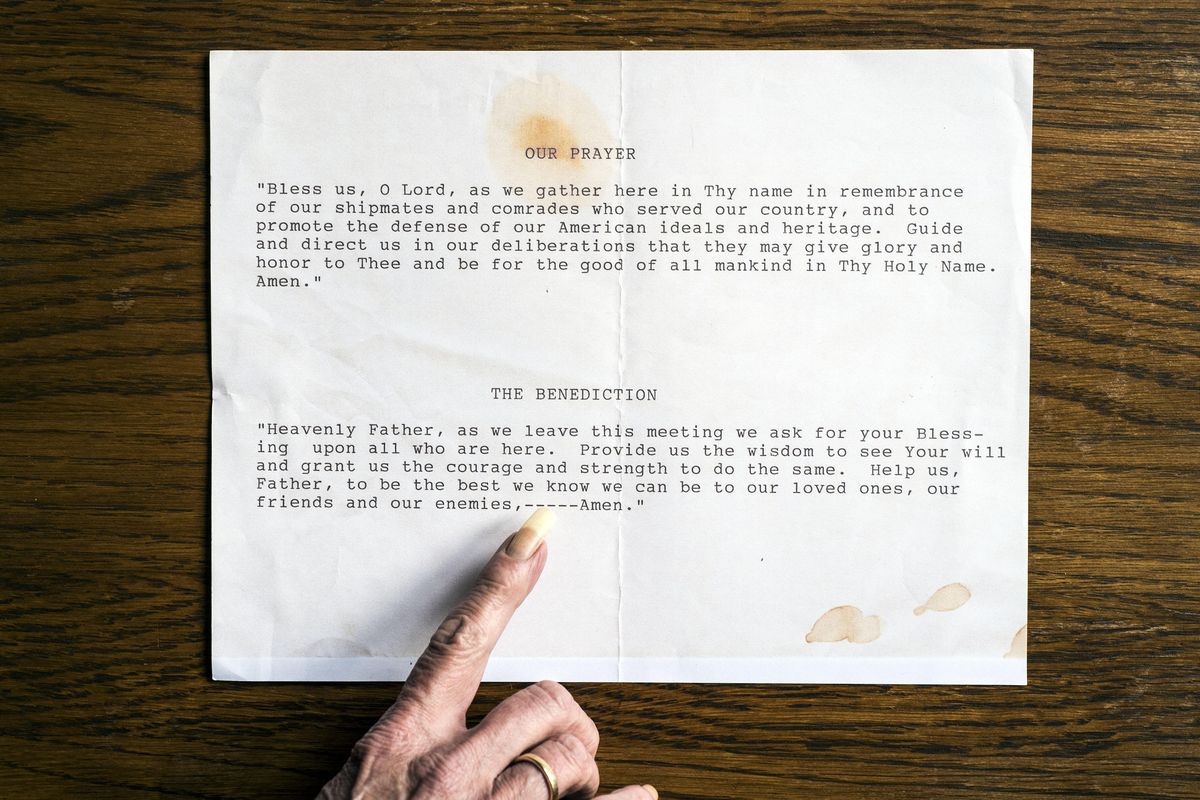Roster of local Pearl Harbor survivors peaked in mid-1990s

Of the 16 million Americans who were in uniform at some point during World War II, no more than about 80,000 could give an eyewitness account from ground zero to VJ Day. They were the soldiers, sailors, airmen and Marines who survived the attack that triggered America’s entry into the world’s first truly global war.
On the morning of Dec. 7, 1941, after two hours of bombing and strafing by planes from six Japanese aircraft carriers, six U.S. military bases on the island of Oahu were in smoking ruins. But the majority of the dead and wounded were on the seven battleships at anchor inside the Navy’s base at Pearl Harbor. For that reason, all other military personnel on the island at the time of the attack were called Pearl Harbor survivors.
No one knows how many of those survivors were killed in action during the battles that followed in the Pacific and European theaters from 1941 to 1945. Nor do we know how many of them fought and died in the Korean War, 1950-53. What we do know is that at least 29,000 were still living when the national Pearl Harbor Survivors Association was founded in 1958. That’s how many eventually applied and qualified for membership in the dozens of chapters that were forming in towns and cities all across the country.
The Lilac City Chapter, based in Spokane, drew its membership from the Pearl Harbor survivors residing in their nationally designated district: Eastern Washington, North Idaho and western Montana. Starting with 28 charter members in 1963, their roster peaked at 125 dues-paying members in 1995. About half of those were still living in 2002. When they invited me into their fellowship in June of that year, barely 20 of them were still “active” – able to attend their monthly meetings. When I told them I needed their advice and counsel for my second book on military history, they told me to hurry. Their average age was 85.
“Radioman: An Eyewitness Account of Pearl Harbor and World War II in the Pacific” came from my series of 25 interviews with the president of the Lilac City Chapter. To verify the accuracy of his memories, I read the rough draft of every chapter to however many were in attendance each month over the course of about two years. They were the ultimate fact checkers. I didn’t even show the manuscript to my agent until they said I had it right.
As “Radioman” was going to press in the spring of 2008, the national president of the Pearl Harbor Survivors Association reported less than 5,000 were still living in the U.S. – 4,923 to be exact. By that time, the Lilac City Chapter had buried most of its members, too. They were down to less than 20 on their roster, and only 12 were active. But it never occurred to them to stop meeting for lunch once a month. It never occurred to me, either. This unique group of World War II veterans had turned into something more than a primary source for my research in military history. They had become, quite literally, my oldest friends.
Three weeks prior to the 70th anniversary ceremonies in Hawaii in 2011, the national Pearl Harbor Survivors Association took its last census from the chapters around the country. Most of them had “gone dark.” Total living membership had dropped to 2,708. At the end of that year, the national organization called it quits, turned out the lights and shut the doors. From then on, the local chapters were on their own.
The Lilac City Chapter was one of a handful that remained on duty. With only 10 active members, they continued to appear together in school and college auditoriums, churches and bookstores, special events in the community and the annual Lilac City Armed Forces Day Parade. They were on a mission to personify their national motto: “Remember Pearl Harbor – Keep America Alert – Eternal Vigilance is the Price of Liberty.”
On Dec. 7, 2014, the last five living veterans in the Lilac City Chapter – two sailors, two soldiers and one marine – dedicated the monument that stands outside the Spokane Veterans Memorial Arena. Their national motto is now etched in stone. Only two were still on this side of heaven on that rainy Pearl Harbor Day in 2015, but they did their job. They went to that stone, dropped their leis in front of it and saluted the fallen. It was their fondest hope that younger Americans would do the same for generations to come.
As we approach the 75th anniversary of the day that changed the course of history – for America and the world – the Department of Veterans Affairs estimates 696,000 of our nation’s World War II veterans are still living. How many of them are Pearl Harbor Survivors is impossible to say. Now that the local chapters are no longer reporting their membership to any national organization, we’re back to guessing. Based on my research in the field, I doubt if there are more than 100. The only one I know for sure is Ray Garland of Coeur d’Alene. At 94, he is the only living veteran left on the Lilac City Chapter’s roster. He is also one very tough marine.
Carol Edgemon Hipperson is a Spokane writer and author of “Radioman: An Eyewitness Account of Pearl Harbor & World War II in the Pacific” (ThomasDunneBooks/ St.MartinsPress, 2008); and “The Belly Gunner: An Eyewitness Account of Stalag 17 & World War II in Europe” (Twenty-FirstCenturyBooks/ MillbrookPress, 2001). Her website is www.carolhipperson.com.